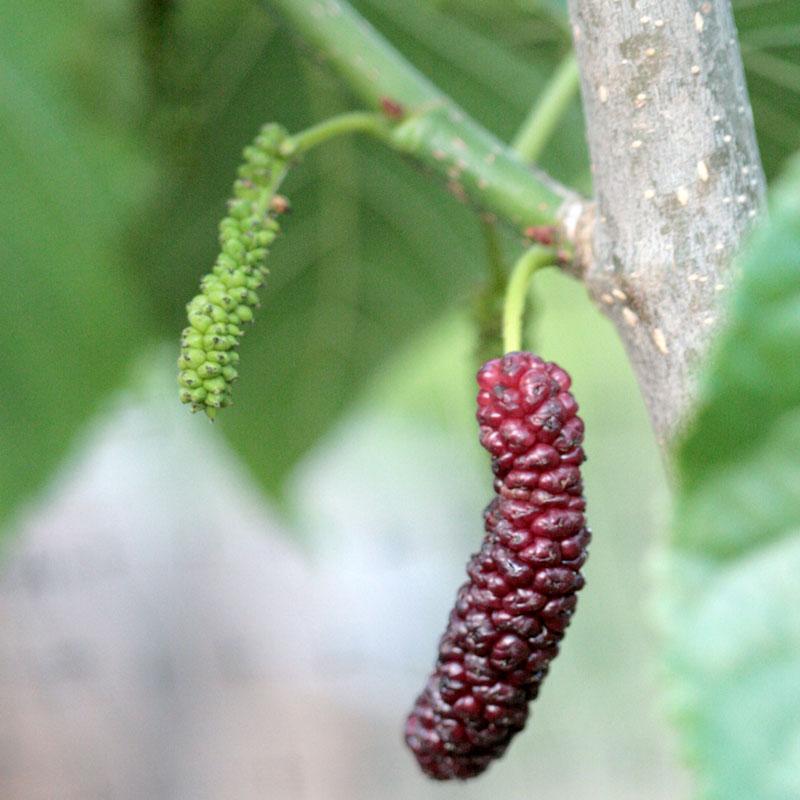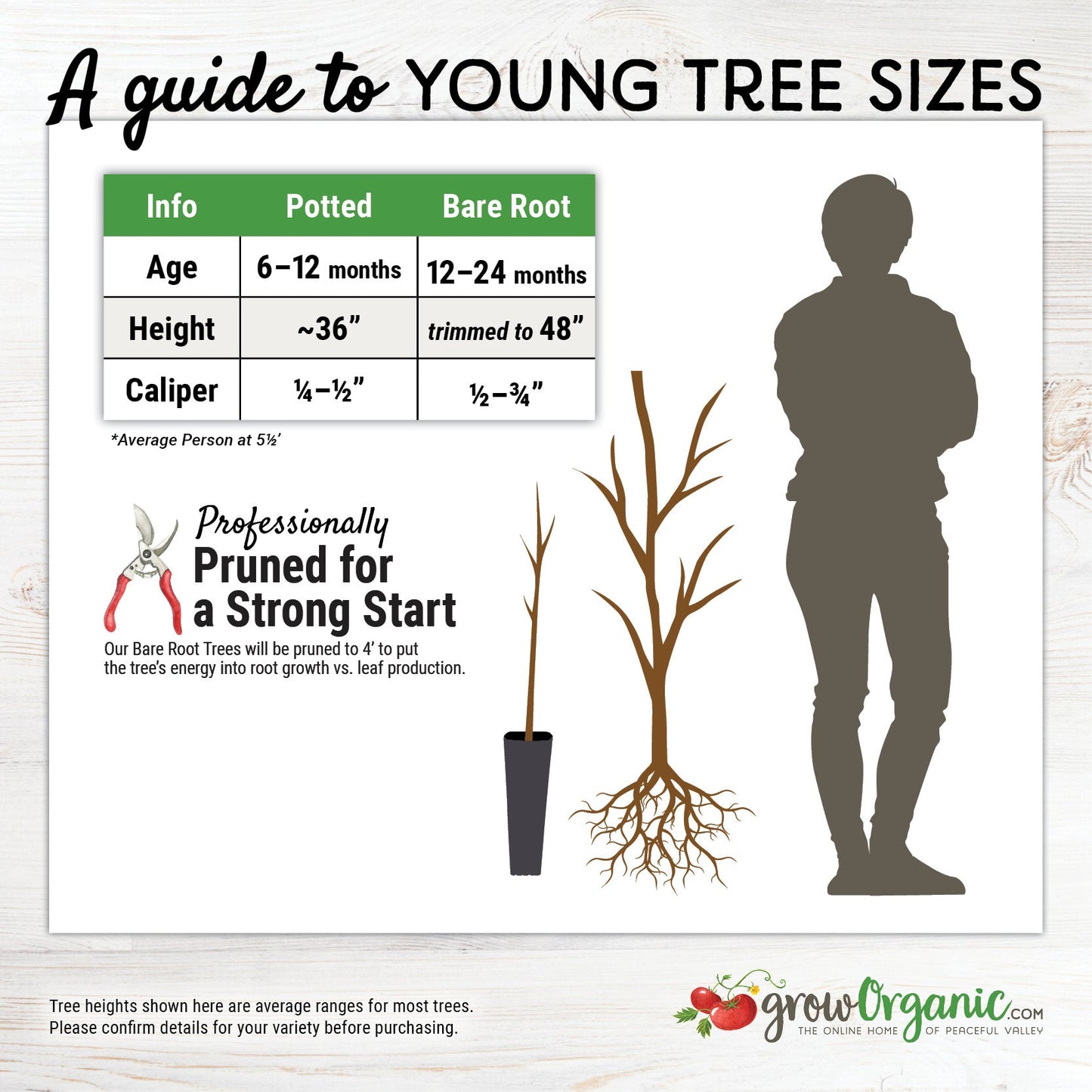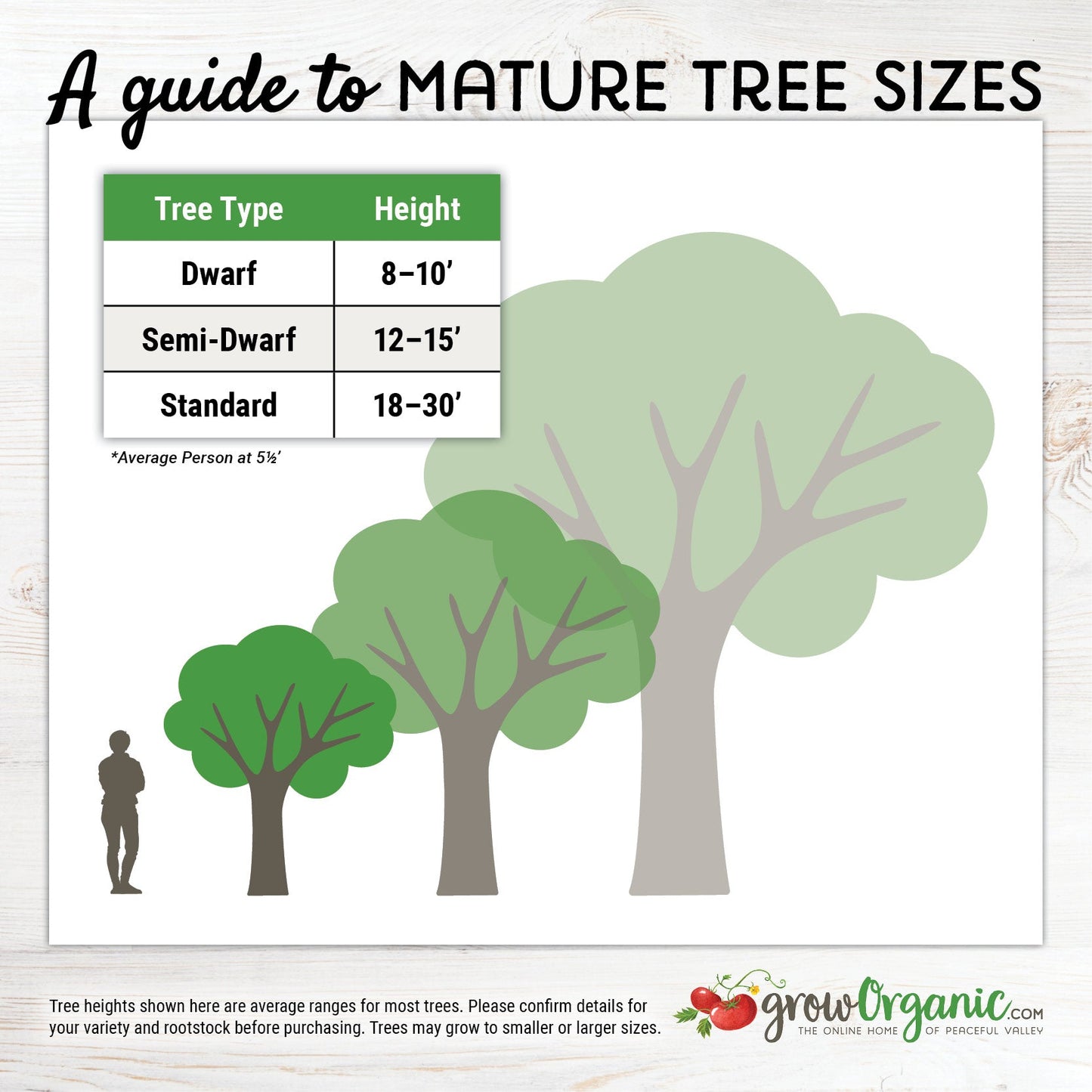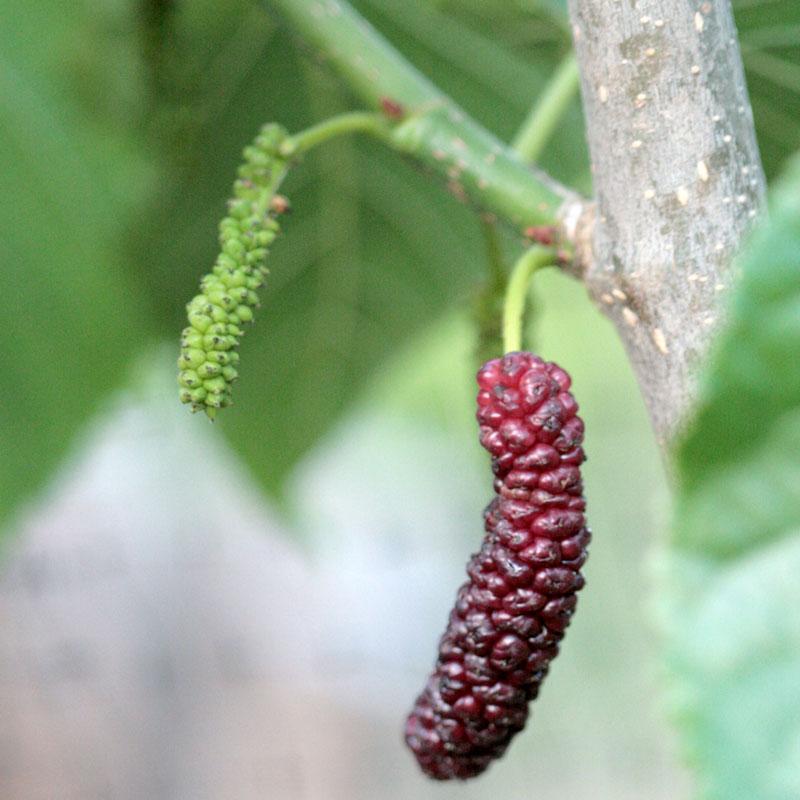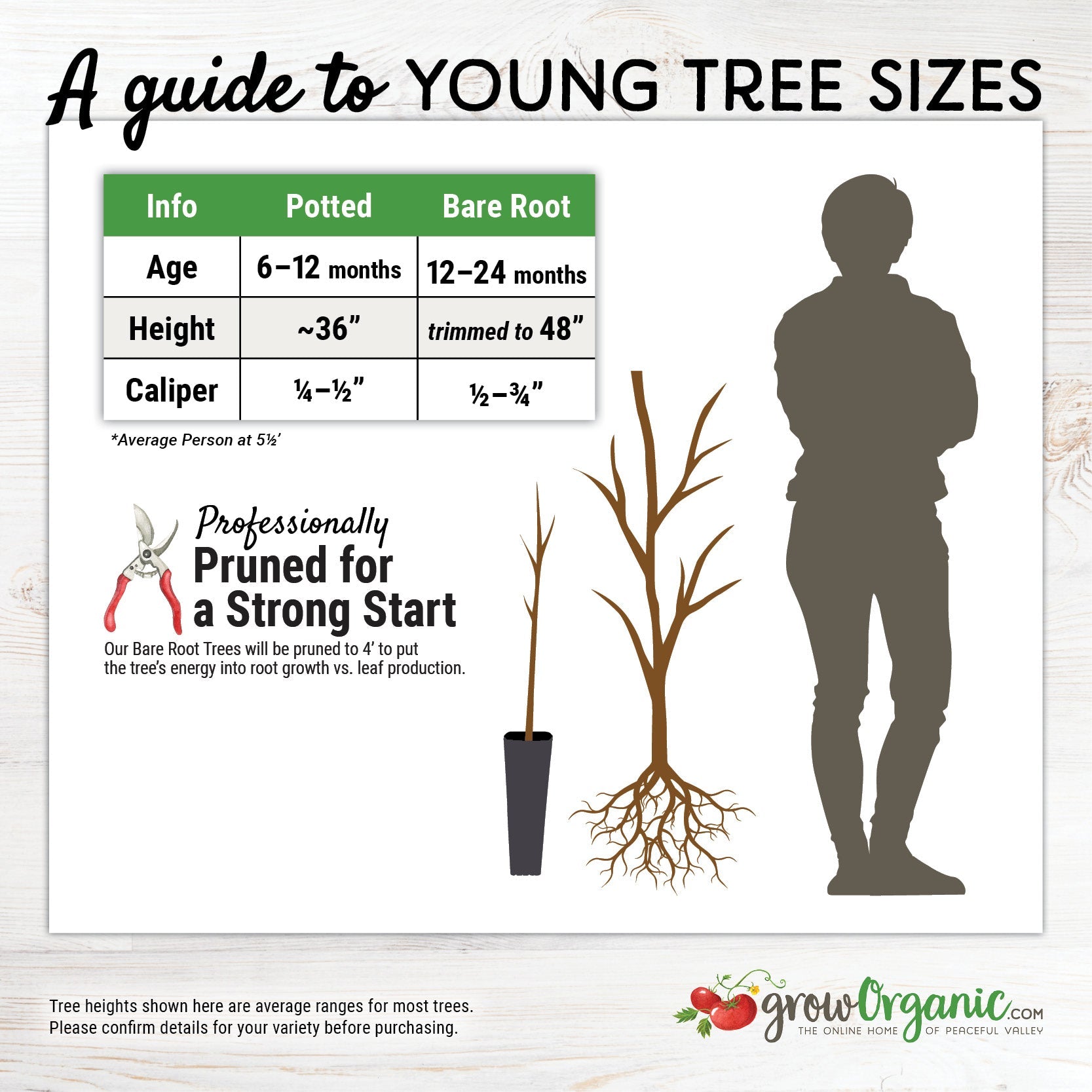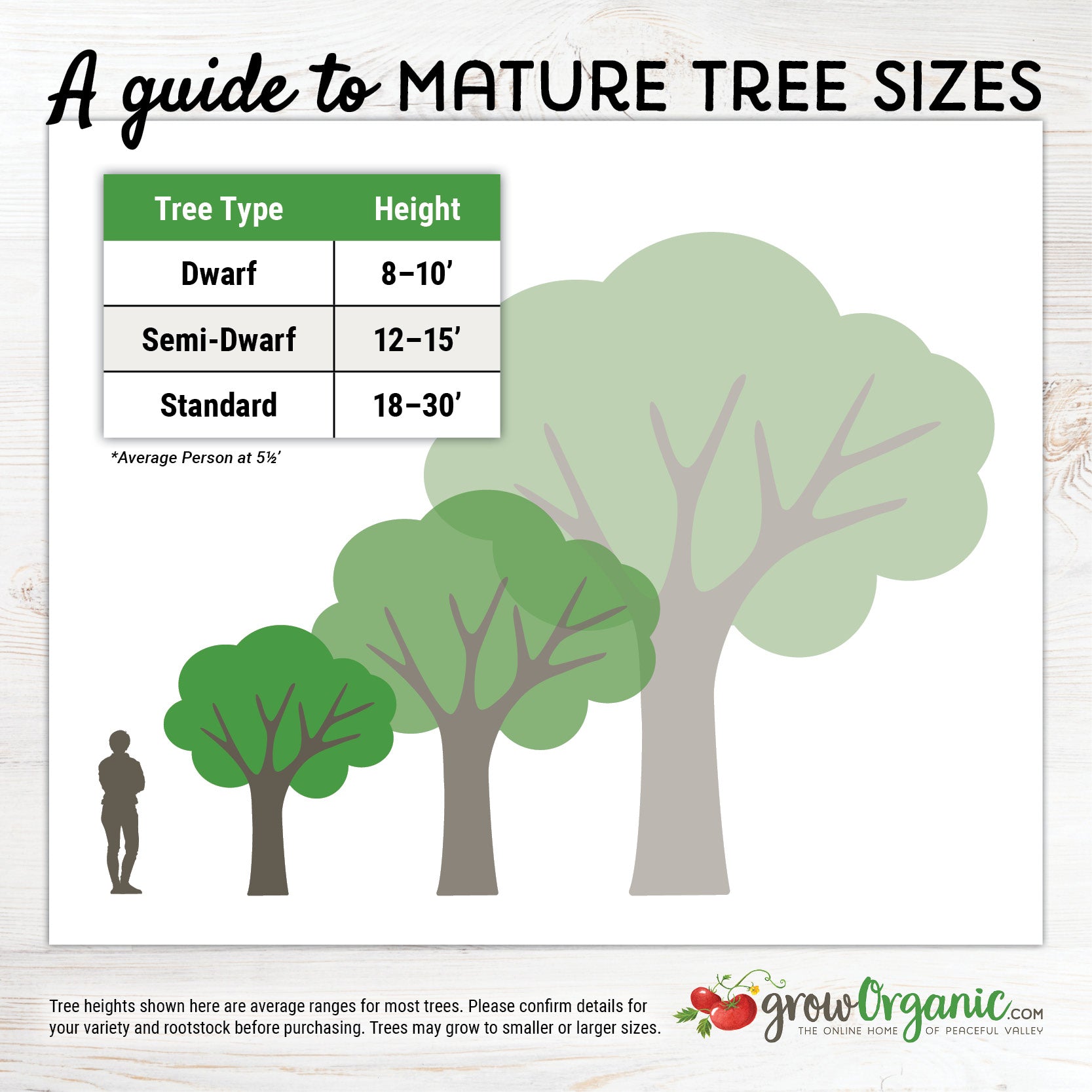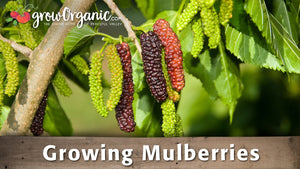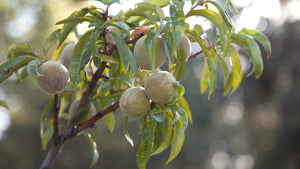Item Number: FT118
Pakistan Fruiting Mulberry Tree
Pakistan Fruiting Mulberry Tree
Large Harvests of Sweet Fruit
Standard on Russian Mulberry Rootstock.
- Zones: 6-9
- Chill hours: 400
- Harvest: April - July
- Looks: Very large, long, red-maroon fruit similar in looks to a 3" long blackberry.
- Personality: Firm fruit has a very sweet raspberry-like flavor.
- Facts of note: Fairly drought tolerant once established. The fruit ripens over a long season rather than all at once, so enjoy a continuous harvest. Large, vigorous, disease-resistant tree, grows to 30-35 ft. Excellent fruit for jams and jellies.
- Pollination: Self-fruitful
The Pakistan Mulberry Fruit Tree, scientifically known as Morus alba 'Pakistan,' is a delightful and fruitful addition to any garden or orchard. Renowned for its sweet and juicy berries, the Pakistan Mulberry is a favorite among fruit enthusiasts and gardeners alike. In this article, we will explore the characteristics, care requirements, and numerous benefits of growing a Pakistan Mulberry Fruit Tree in your outdoor space.
Overview of the Pakistan Mulberry Fruit Tree:
Scientific Name: Morus alba 'Pakistan'
Common Name: Pakistan Mulberry
Origin: Pakistan
Fruit Type: Sweet and juicy mulberries
Growth Habit: Deciduous tree with a rounded canopy
Size: Mature Pakistan Mulberry trees typically reach a height of 15 to 25 feet with a similar spread
Unique Characteristics:
The Pakistan Mulberry Fruit Tree is cherished for its remarkable fruit, which boasts several unique characteristics:
Sweet Flavor: Pakistan Mulberries are celebrated for their exceptionally sweet flavor. These berries are often described as honey-like, offering a delightful taste that appeals to a wide range of palates.
Berry Size: The berries of the Pakistan Mulberry are relatively large, typically measuring between 1 and 1.5 inches in length. Their size makes them easy to harvest and enjoy.
Color Variations: While the ripe berries are typically deep purple to black, they can display variations in color, including shades of red and maroon, adding visual interest to your garden.
Long Harvest Season: Pakistan Mulberries have a generous harvest season, providing a consistent supply of delectable fruits throughout the summer months.
Growing and Caring:
Pakistan Mulberry Fruit Trees are relatively easy to grow and maintain. Here are some essential care guidelines:
Sunlight: Pakistan Mulberries thrive in full sun, requiring at least 6 to 8 hours of direct sunlight daily.
Soil: They prefer well-draining soil with a slightly acidic to neutral pH. Amending the soil with organic matter can improve fertility and drainage.
Watering: Provide regular and deep watering, especially during the growing season and dry spells. Ensure the soil remains consistently moist but not waterlogged.
Pruning: Pruning helps maintain the tree's shape, remove dead or diseased branches, and promote air circulation. Prune in late winter or early spring before new growth begins.
Fertilization: Fertilize your Pakistan Mulberry tree in the spring with a balanced, slow-release fertilizer to support healthy growth and fruit production.
Pest and Disease Control: Keep an eye out for common fruit pests such as aphids and spider mites. Applying neem oil or insecticidal soap can help control these issues. Pakistan Mulberry trees are generally resilient and less susceptible to diseases compared to other fruit trees.
Culinary Uses and Health Benefits:
Pakistan Mulberries offer several culinary uses and health benefits:
Culinary Delight: These sweet and juicy berries are perfect for fresh consumption, adding them to salads, making preserves, jams, or jellies, and using them in baking, desserts, or smoothies.
Nutrient-Rich: Pakistan Mulberries are a good source of vitamins, including vitamin C and vitamin K, as well as dietary fiber, iron, potassium, and antioxidants.
Health Benefits: Consuming mulberries is associated with various health benefits, including improved digestion, heart health, and a strengthened immune system.
The Pakistan Mulberry Fruit Tree, with its delicious and abundant berries, is a delightful addition to any garden or orchard. Whether you're an experienced gardener or a novice, growing a Pakistan Mulberry tree can be a rewarding experience. Enjoy the benefits of fresh, homegrown mulberries while adding an attractive and fruitful tree to your outdoor space. Embrace the delicious flavors and numerous culinary possibilities that this remarkable tree offers, and watch your garden flourish with the presence of the Pakistan Mulberry Fruit Tree.
Resource Guide for planting and growing mulberry trees. And some history on mulberries in our recent blog post.


Check Your Zone Compatibility:
Compatible with your zone.
Growing Zone for
,

Our Guarantee To You
Since 1976, we've served our customers at every stage of growing. Please contact us at any time. We are happy to support and assist you.
Description
Description
Standard on Russian Mulberry Rootstock.
- Zones: 6-9
- Chill hours: 400
- Harvest: April - July
- Looks: Very large, long, red-maroon fruit similar in looks to a 3" long blackberry.
- Personality: Firm fruit has a very sweet raspberry-like flavor.
- Facts of note: Fairly drought tolerant once established. The fruit ripens over a long season rather than all at once, so enjoy a continuous harvest. Large, vigorous, disease-resistant tree, grows to 30-35 ft. Excellent fruit for jams and jellies.
- Pollination: Self-fruitful
The Pakistan Mulberry Fruit Tree, scientifically known as Morus alba 'Pakistan,' is a delightful and fruitful addition to any garden or orchard. Renowned for its sweet and juicy berries, the Pakistan Mulberry is a favorite among fruit enthusiasts and gardeners alike. In this article, we will explore the characteristics, care requirements, and numerous benefits of growing a Pakistan Mulberry Fruit Tree in your outdoor space.
Overview of the Pakistan Mulberry Fruit Tree:
Scientific Name: Morus alba 'Pakistan'
Common Name: Pakistan Mulberry
Origin: Pakistan
Fruit Type: Sweet and juicy mulberries
Growth Habit: Deciduous tree with a rounded canopy
Size: Mature Pakistan Mulberry trees typically reach a height of 15 to 25 feet with a similar spread
Unique Characteristics:
The Pakistan Mulberry Fruit Tree is cherished for its remarkable fruit, which boasts several unique characteristics:
Sweet Flavor: Pakistan Mulberries are celebrated for their exceptionally sweet flavor. These berries are often described as honey-like, offering a delightful taste that appeals to a wide range of palates.
Berry Size: The berries of the Pakistan Mulberry are relatively large, typically measuring between 1 and 1.5 inches in length. Their size makes them easy to harvest and enjoy.
Color Variations: While the ripe berries are typically deep purple to black, they can display variations in color, including shades of red and maroon, adding visual interest to your garden.
Long Harvest Season: Pakistan Mulberries have a generous harvest season, providing a consistent supply of delectable fruits throughout the summer months.
Growing and Caring:
Pakistan Mulberry Fruit Trees are relatively easy to grow and maintain. Here are some essential care guidelines:
Sunlight: Pakistan Mulberries thrive in full sun, requiring at least 6 to 8 hours of direct sunlight daily.
Soil: They prefer well-draining soil with a slightly acidic to neutral pH. Amending the soil with organic matter can improve fertility and drainage.
Watering: Provide regular and deep watering, especially during the growing season and dry spells. Ensure the soil remains consistently moist but not waterlogged.
Pruning: Pruning helps maintain the tree's shape, remove dead or diseased branches, and promote air circulation. Prune in late winter or early spring before new growth begins.
Fertilization: Fertilize your Pakistan Mulberry tree in the spring with a balanced, slow-release fertilizer to support healthy growth and fruit production.
Pest and Disease Control: Keep an eye out for common fruit pests such as aphids and spider mites. Applying neem oil or insecticidal soap can help control these issues. Pakistan Mulberry trees are generally resilient and less susceptible to diseases compared to other fruit trees.
Culinary Uses and Health Benefits:
Pakistan Mulberries offer several culinary uses and health benefits:
Culinary Delight: These sweet and juicy berries are perfect for fresh consumption, adding them to salads, making preserves, jams, or jellies, and using them in baking, desserts, or smoothies.
Nutrient-Rich: Pakistan Mulberries are a good source of vitamins, including vitamin C and vitamin K, as well as dietary fiber, iron, potassium, and antioxidants.
Health Benefits: Consuming mulberries is associated with various health benefits, including improved digestion, heart health, and a strengthened immune system.
The Pakistan Mulberry Fruit Tree, with its delicious and abundant berries, is a delightful addition to any garden or orchard. Whether you're an experienced gardener or a novice, growing a Pakistan Mulberry tree can be a rewarding experience. Enjoy the benefits of fresh, homegrown mulberries while adding an attractive and fruitful tree to your outdoor space. Embrace the delicious flavors and numerous culinary possibilities that this remarkable tree offers, and watch your garden flourish with the presence of the Pakistan Mulberry Fruit Tree.
Resource Guide for planting and growing mulberry trees. And some history on mulberries in our recent blog post.
Mulberry trees are native to tropical climates and produce a sweet multiple-fruit (looks somewhat like a long skinny blackberry). The trees grow swiftly at first but soon become slow growing, a mature tree rarely reaches over 30 ft. Black mulberries can grow in a bushy-like habit if not trained young into a tree. The fruit is used extensively in jams. The trees are fairly drought tolerant once established. Trees are 2 years old and should fruit in their 3rd year. Browse all our mulberry trees for sale.
Mulberries are generally free of pests and diseases, although cankers and dieback can occur. They like a warm, well-drained soil, preferably a deep loam. Shallow soils such as those frequently found on chalk or gravel are not recommended. Mulberries are prone to desiccation and frost damage when planted from bare root. To reduce the risk of plant loss, it is a good idea to thoroughly hydrate the plant and prune back the lateral growth of the plant to reduce the amount of surface area exposure.
Please Note: Although most of our bare-root trees arrive to our warehouse in mid-December, there are a few varieties that will not arrive until mid-January. If you order any of those varieties along with varieties that arrive in mid-December, your order will be delayed for shipment until mid-January. If you'd like us to split your shipments, please contact us at (888) 784-1722 or orderdesk@groworganic.com. Additional shipping charges will apply.
Shipping Information
Shipping Information
Cannot ship to the following states: HI, AK, PR, GU, VI
Cannot ship via USPS.
Cannot ship via SmartPost.
Shipping Weight: 5.0 lb
Dimensions: 55.5"L x 7.3"W x 2.75"H
Features
Features
- Self-fruitful
Characteristics
Characteristics
Planting & Care
Planting & Care
Mulberries are generally free of pests and diseases, although cankers and dieback can occur. They like a warm, well-drained soil, preferably a deep loam. Shallow soils such as those frequently found on chalk or gravel are not recommended. Mulberries are prone to desiccation and frost damage when planted from bare root. To reduce the risk of plant loss, it is a good idea to thoroughly hydrate the plant and prune back the lateral growth of the plant to reduce the amount of surface area exposure.
Useful Information
Useful Information
Guarantee
Guarantee
Limited Dormant Tree & Plant Guarantee
* Claim deadline is June 15th
We guarantee that your dormant tree or plant will arrive in good, viable condition. If your tree arrives in substandard condition, notify us within 3 days of delivery. Please email pictures of the box, inside packaging, the tree and its roots to helpdesk@groworganic.com. We will investigate your claim and process a request to exchange or refund the damaged product.
If your dormant tree or plant has not grown new leaves by June 15th, you may be eligible for our Limited Dormant Tree & Plant Guarantee. This guarantee provides for a store credit for the purchase price of the tree, excluding shipping. Please see the Instructions below.
Important Dates:
- April 1st Dormant trees/plants must be planted in the ground
- May 15th Perform scratch test, if no new leaves have grown
- June 15th Deadline to apply for a dormant tree/plant credit
All required documentation must be received by June 15th for your claim to be considered. Claims or documentation received after June 15th will be denied, without exception. Instructions listed below
Terms and Conditions
We cannot guarantee that your tree or plant will remain alive and healthy after it is received, or bear fruit as there are too many variables in your environment that are beyond our control (i.e. soil preparation, weed and pest control, proper irrigation, chill hours, compatible hardiness for your growing zone, proper choice of pollinator, extreme weather, rodent damage, disease, etc.).
We cannot guarantee that we will be able to provide a replacement tree/plant of the same species either that same growing season or in future years. Customers are responsible for all shipping fees associated with replacement trees and plants.
If we determine that the tree you purchased directly from us is not viable, we will issue you a store credit (not a refund) for the purchase price of the affected dormant tree or plant. Shipping is not included in the dormant tree/plant guarantee. Store credits can be used to purchase any product we sell and are valid for use only until July 1st of the following year.
Historically, 98% of our dormant trees and plants grow and thrive when they have been cared for and planted using our growing guides. Dormant trees and plants must be planted in the ground by April 1st in order to be eligible for credit. If the ground in your area is still frozen solid, you may temporarily plant your tree or plant in a pot.
Potted, non-dormant trees or plants are excluded from this guarantee as they are not dormant at the time of shipment. Evergreen trees such as citrus, avocado and olive trees are not available for credit under the Dormant Tree and Plant Guarantee.
Instructions
We guarantee that your dormant fruit tree or plant will leaf out, if you care for it according to our growing guides. In the unlikely event that your dormant tree or plant does not have leaves by May 15th, follow these simple steps to apply for a store credit:
Before you call or email, please perform a “scratch test” to determine if the tree or plant is still alive. This video shows how to check for live tissue under the bark. Scratch tests need to be done a few inches above and below the graft.
Green Cambium Layer / Living Trees
If the cambium layer under the bark is green, give your tree a little more time. It is still alive, but hasn’t come out of dormancy yet. Check to make sure that it is getting the right amount of deep root water, enough sunlight and that the weather is warm enough for that type of tree/plant to come out of dormancy. Every tree has its own personality and will come out of dormancy at different times. Be sure to submit the required documentation listed below by June 15th, if it doesn’t grow leaves.
Brown Cambium Layer / Dead Trees
If the scratch test shows a brown cambium layer or if your dormant tree/plant doesn’t have leaves by June 1st, please email us at helpdesk@groworganic.com. All required documentation listed below must be received by June 15th for your claim to be considered. To be considered for the guarantee claim, all required documentation must be received by June 15th. Incomplete submissions will be denied.
Required Documentation
- Order number
- Name of dormant tree/plant and the quantity affected
- Photos of each tree or plant showing:
- The roots (tree or plant must be pulled out of the ground)
- The scratch test areas
- The entire tree/plant
We reserve the right to not issue credit for items that have already been replaced. We also reserve the right to require photographic evidence that the tree/plant was not killed by root rot, rodent or mechanical damage.
Share
